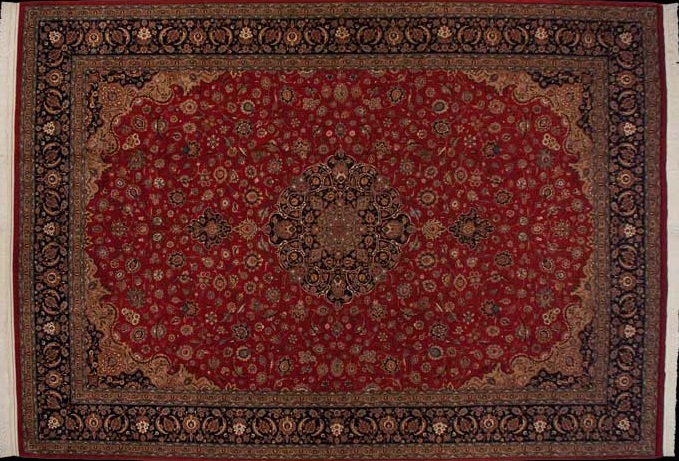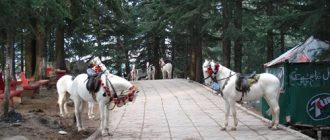Would you like to decorate your home with traditional handmade Pakistani rugs and carpets? Then read our guide for more facts and information…
History of Pakistani Rugs
Pakistani rugs have gained immense popularity over the last twenty years. A few decades ago, not many knew that rug making is a tradition engrained in the Pakistani society. Although you will not find many antique Pakistani rugs as the country was born after World War II, the roots of the rug making industry are inspired from the carpets woven during the seventeenth and eighteenth centuries for the Mogul courts and palaces.
Today Pakistani rugs and carpets are produced in many of the main cities of the country such as Karachi, Lahore and Rawalpindi. The local industry has grown to provide carpets and rugs in many types, designs and styles to meet the growing demand.
Pakistani Rugs Styles and Designs
The Pakistani variety is usually hand knotted and hand spun which makes them labor intensive as compared to other varieties made using machines. Pakistani rugs come under the category of Oriental rugs which also include Chinese, Indian, Turkish and Iranian rugs. This is why many styles and designs are inspired from the Turkish and Iranian antique hand knotted rugs which are appreciated around the world.
The Pakistani rugs are cut short using trimming skills to create the feel of antique handmade rugs. The carpets are made with wool yarn from New Zealand and Australia to make them similar to silk carpets. The rugs with imported wool get a better price in the international market for the maker.
The Pakistani rugs have a higher knot density which is an important measure of the quality of a rug. They are durable and yet are cheaper than their Persian counterparts who have lower knot density but are expensive due to the fine wool used.
Types of Pakistani Rugs
There are many kinds of Pakistani rugs however the most popular ones are Persian, Bokhara, Chobi and Gabbeh tribal rugs. Even though all Pakistani rugs are hand crafted and hand knotted yet the types are different in some respects.
Pakistani Persian Rug
Many buyers get confused when they hear that they are being offered the Pakistani Persian rugs. These rugs are made in Pakistan and have Persian accents owing to the Mogul Empire which was spread across the Asian subcontinent and so the traditional Persian designs found their way in Pakistan.
The Pakistani Persian varieties of rugs come in an array of colors with traditional floral designs. The life of these rugs are estimated to be 125 to 200 years as the knot count is very high, over 500 knots per square inch and the knot type is known as Senna, an asymmetrical knot used in fine and complex carpets. The hand knotted rugs which have a high knot count are known as specialty pieces as they can take up to eighteen months to complete while the average is 12-14 months for a 9 by 12 inches rug.
Pakistani Bokhara Rug
Bokhara is another popular type of Pakistani rug which is bought and sold worldwide. They are made in many parts of Pakistan including Hyderabad, Lahore and the northeast region of the country. The Bokhara rugs have a luxurious and plush feel to them as they are made from soft imported wool from Australia and New Zealand.
They come in traditional geometric patterns while some designs have a silk outline. Commonly a Bokhara rug will have five to eight jewel toned colors although the typical Pakistani Bokhara is loved in the red color. The Bokhara rugs have a knot count of more than 200 knots per square inch and a typical rug can be made in nine to ten months by experienced artisans.
Pakistani Gabbeh Rugs
Gabbeh is a Persian word meaning fringe and it is a traditional Persian carpet. Pakistani weavers particularly in Balochistan have recently started making the Gabbehs which are simple, hand woven rugs made from natural wool yarn. They are easy to produce due to the less number of knots per inch and are usually made by women in nomadic areas.
The Gabbeh rug is distinguished through it abstract design which is inspired from colors and eclectic geometrical designs. The colors mostly vary throughout the rug but the bright colors such as yellow and red are the most popular. The patterns are known to be limited with inspiration taken from animals.
A Gabbeh rug usually requires ten to twelve months to complete and similar to the Chobi as it is also a labor-intensive rug as it is hand spun and has pure natural dyes. The finished look and soft texture of the Gabbeh gives it an antique look.
The Gabbehs are in great demand today and are being made in many designs to suit the modern and traditionalist interiors. They are also relatively less expensive than other carpets and so if you want a handspun rug with natural dyes and contemporary patterns such as stripes and geometric designs, then the Gabbeh is perfect for you.
Pakistani Chobi Rug
Chobi is a Persian word meaning wood and so the name Chobi rug helps the buyer identify the source of the natural dye. The Chobi variety produced in many parts of Pakistan and is the most labor intensive out of all rugs. All the Chobi rugs are hand knotted with wool spun and come in floral and geometric patterns.
Remarkably the natural dyes are made from tree barks, roots, fruits, vegetables and dried shells which are all hand-picked. The dying technique has been improved over the years to ensure that the dye is fade-proof, steady and lasts for a long time. The natural dye of Chobi is known for its beautiful natural color and lustrous texture. The color palette includes soft browns and tans to dark rich maroons, greens and copper color. Each rug has more than 100 knots per square inch and has four to seven colors.
A Chobi rug takes around twelve to fourteen months to complete and surprisingly most of the labor work is done even before the rug loom stage during the production of the seasonal dyes and spinning of the wool.
As a buyer you should remember to note that the rug you buy should mention the name of the village where it was woven on the corner, as the quality of the rugs vary according to the place they are made and not according to the designs. In addition you should remember that a handmade high quality rug will lie straight on the floor due to its wool quality. You must go to a trusted rug dealer as the rug industry is known to take advantage of the lack of knowledge of the customer. So be sure to go through a reference to get the best value for your money
Now that you know everything about the handmade Pakistani rugs and carpets, you are ready to look for the perfect piece!





